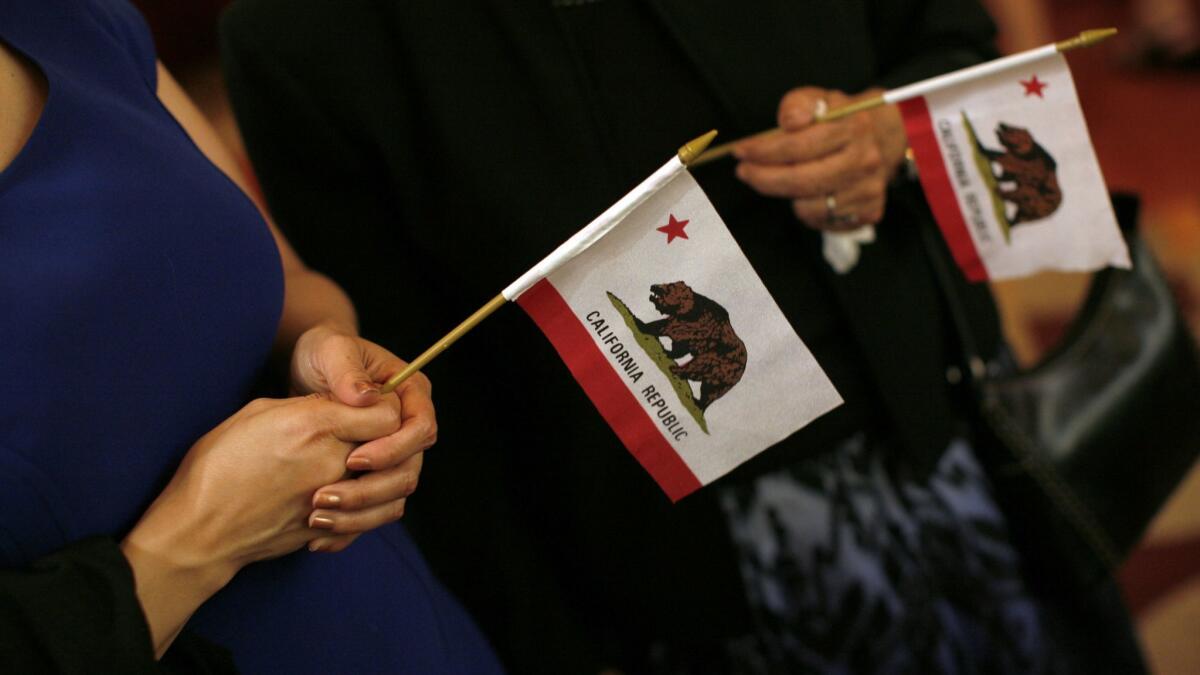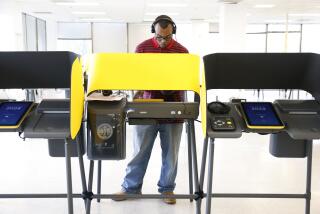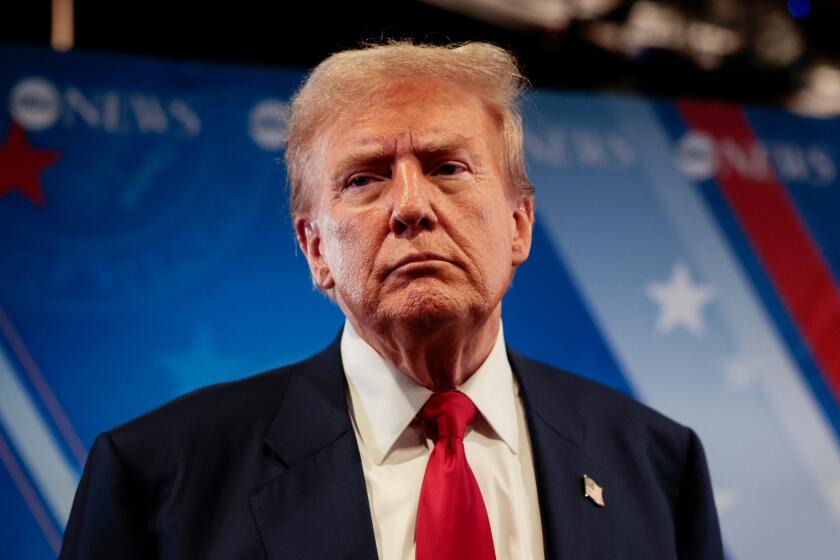Op-Ed: California’s midterm results show that if a third party can be viable anywhere, it’s here

Those of us who inhabit the space in American politics between the 40-yard lines have watched with dismay as the nation’s two major parties retreat to their respective ideological end zones. As election after entrenched election passes, we have to wonder about the potential for a third party that would occupy the ground near midfield that has been abandoned by Democrats and Republicans.
I’m a former California Republican, now an independent. In California that means I’m NPP — registered as “no party preference.” Voter registration in my old party has fallen to less than one-quarter of the state electorate. The California GOP now has fewer official members than the number of state voters who are registered NPP. The large numbers of registered independents are reason to think that if a third party could be viable anywhere, it would be here.
Republicans have lost support because of a doctrinaire message and an agenda that particularly makes many women, minorities and young people feel unwelcome. They have essentially defaulted control of the state to Democrats, who without the checks-and-balances inherent in a functioning two-party system have struggled to develop solutions for the state’s housing, transportation and public education crises.
Last month’s election, however, provides a road map for how a new party could emerge in California that could rebalance our politics. Steve Poizner, who was state insurance commissioner from 2007 to 2011, sought to regain the post. He too used to be a Republican, but in 2018, he was the first no party preference candidate in California history to run on a statewide general election ballot.
Although Poizner was defeated, he received 700,000 more votes than the Republican candidate for governor. In all, 5 million Californians marked their ballots for him, the most votes cast for an independent for any statewide position in American history. He was endorsed by the editorial boards of all 24 newspapers that chose to endorse in the insurance commissioner’s race. Only the deep, deep blue of the state’s Democratic wave — it swept every statewide office and every competitive California congressional district — kept Poizner from victory.
Although he didn’t make a big deal out it, Poizner really was an independent, midfield political player. Rather than carrying partisan baggage, Poizner is a pragmatist. The Los Angeles Times endorsement called him “innovative”: When he was insurance commissioner he proved he could walk the line between guarding consumers and assuring that insurance companies didn’t go out of business.
The California GOP now has fewer official members than the number of state voters who are registered NPP — “no party preference.”
The data underlying Poizner’s near-miss make it clear that, in an election with a more even playing field, candidates like him could win. His middle of the road stance and experience carried Southern California suburbs in Orange and Ventura counties, traditional swing districts in the Central Valley, including Sacramento, and outright Republican bastions in eastern and Northern California. His defeat was a result of large-scale losses in the dramatically blue Bay Area suburban counties and in coastal areas where Democrats also piled up sizable margins.
However, the areas he lost have the largest percentage of NPP voters in California. In the midterm election, these voters were — unsurprisingly — strongly motivated to turn out against President Trump and his allies. They almost certainly cast straight Democratic ballots as a statement against the president.
This suggests that an NPP candidate, perhaps one making even more of his or her independent status than Poizner did — could make significant inroads with these voters in a future election less colored by national overtones. (Granted, that landscape is unlikely to exist until Trump has left the arena.)
Enter the Fray: First takes on the news of the minute from L.A. Times Opinion »
The fact that Poizner came so close to victory tells us that the voters of California are not the captives of the traditional two parties. When good candidates who are qualified for the post they are running for discard party labels, voters will cast their votes outside of the partisan strictures that permeate every other part of society.
There is no mention of political parties in the Constitution, and many of the framers actively disliked them. Now their existence dominates and has gridlocked our very concept of government.
In California and across America, many talented people choose not to run for office because they want no part of the bitterness of partisan politics. Poizner showed a way to serve by running as an independent, and his considerable success, even in a loss, should be a starting place for those who have no desire to be partisan warriors but are willing to run and serve as nonpartisan problem solvers.
California voters deserve a choice when they cast their ballots every two years. A truly independent movement can provide them with that choice.
Dan Schnur, a professor at USC’s Annenberg School of Communications and UC Berkeley’s Institute of Governmental Studies, worked on four presidential and three gubernatorial campaigns. He ran as an NPP primary candidate for California secretary of state in 2014.
Follow the Opinion section on Twitter @latimesopinionand Facebook
More to Read
A cure for the common opinion
Get thought-provoking perspectives with our weekly newsletter.
You may occasionally receive promotional content from the Los Angeles Times.










